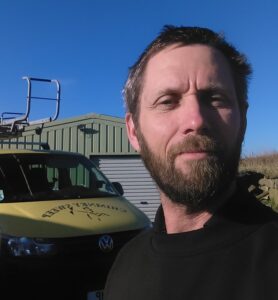Things to ask your installer if you are having a stove fitted, or reinstating a fireplace
If you are considering having a open fire reinstalled you must get the chimney flue condition and integrity checked.
This will require a sweep, cctv inspection and either a type 1 integrity smoke test or pressure test to be done before anything else is considered.
If someone just looks in the bottom of the fireplace and says its ok they are not doing what is legally required and are certainly not considering your best interests.
Even a clay lined flue in a more modern house may be damaged or incorrectly installed by the builders years before. Gaps, cracks or missing sections can be collection areas for soot and tar build up and in the event of a fire be further sources of fuel and potential weak spots in the chimney .
The fireplace will need to be a minimum of 37% efficiency and will need a large air vent installed in the room of the appliance no matter the age of the property.
If the flue is in a poor state and has gaps into other flues sharing the same stack , simply dropping a solid fuel flexible liner isn’t enough as the structure of the chimney flue needs to be sound. Again this cannot be seen by looking up and down a chimney. Don’t be fooled by an incompetent or uneducated installer or swayed by cost. This could cost you a lot more in the long run .
A fully trained , insured professional chimney sweep will be able to do this service for you or direct you to those who have the correct equipment to do the required work.
Solid Fuel Appliances are not just Wood or Multifuel Stoves or Cookers. It also applies to Open Fires and room heaters. The information required is the same.
If you live in a Smoke Control Area you will only be able to burn smokeless coal on an open fire, or if you have a stove , you can only burn split seasoned or “Ready to Burn” timber , or smokeless coal if its a multifuel appliance ( do not mix fuel types)
As there is little or no regulation on who can install in Scotland, so it is vital you ask your chosen installer these questions and be sure they will be able to supply you with the documentation and assurances.
It will put off those who don’t know or are not competent enough to undertake this kind of work.
If the installer tells you that some or all of this is not needed they are not complying with Building Regulations and Manufacturers Installation Instructions.
A CPS registered Installer must supply ALL of this as part of their CPS membership requirements.
A Certified Chimney Sweep has swept and CCTV inspected the flue to see it is :-
- Suitable for the appliance to be fitted or the condition and structural stability is suitable to support the installation of the required solid fuel flexible liner.
- The existing Flue is clear of soot or Tar remains ( A flue which still has these flammable remains is still able to catch fire externally to the new liner)
- The Height and internal dimensions to check the size of liner that can be fitted if needed.
- If a 5” ( 125/127mm) diameter liner is used , that the appliance is DEFRA Exempt and you are informed the correct type of fuel is burnt as per regulations
- The Hearth is suitable and of the correct dimensions for the site and type of stove .
- The correct materials are used , (A1 rated boarding , metal studding , connecting parts are secured using stainless steel fixings and sealed with 1200degree+ sealants)
- The correct designation rated liner and its orientation is noted, The top is secured as per manufacturers instruction with a plate and clamp or top hanging cowl
- Is the appliance below 5kw nominal output and does your home have an air permeability above 5.0m3/(h.m2) or will you need an air vent and of what size? (5kw and above requires a vent in an older property , a newer 2008 onward will need one for every kw as a guide.)
- A DATA Plate is filled in with make, diameter length, its Designation, the appliance and its location along with the installers name and if CPS Registered, membership number. And fixed in fuse box or in the fireplace.
- A Carbon Monoxide detector conforming to BSEN 50291-1:2010 ( 5-7 year sealed for life battery) is mounted the correct distance from the appliance in accordance with manufacturers directions.
- Full commissioning documentation available from appliance maker or CPS Registered fitter ( Flue draft reading and confirmation of distance to combustibles DTC)
REMEMBER THIS OLD SAYING PAY CHEAP, PAY TWICE!







